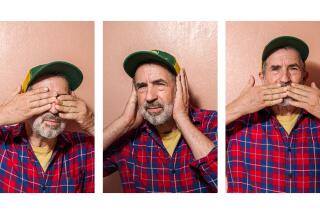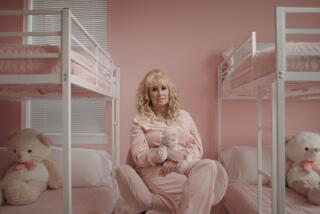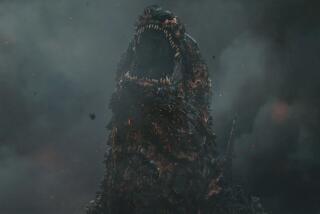Exposing ugly secrets
“The Cove” is a powerful and effective piece of advocacy filmmaking, but it’s difficult to watch it without thinking of subtitles like “The Place Where Evil Dwells” or “The Little Town With the Really Big Secret.” Which is no accident.
“The Cove’s” story of a quiet village in Japan that specializes in clandestine dolphin slaughter is quite consciously structured as a thriller by director Louie Psihoyos who won an audience award for it at Sundance.
The film follows a group of determined environmental commandos as it attempts to document what goes on in a deceptively tranquil lagoon. The leader of the group, and hands down the most compelling person in the film, is Ric O’Barry, who became famous decades ago as the man who both captured and trained the five dolphins who collectively became TV’s Flipper and so helped start the multimillion-dollar seaquarium industry.
But after Kathy, the main “Flipper” dolphin, died in his arms, O’Barry had a major change of heart and became an uncompromising free-the-dolphins zealot. “I was as ignorant as I could be for as long as I could be,” he explains. “I spent 10 years building, and the next 35 trying to tear down.”
First-time director Psihoyos, a National Geographic photographer who is one of the founders of the Oceanic Preservation Society, got interested in O’Barry when the man was barred from speaking at a marine conference. O’Barry told him about the town of Taiji, which masquerades as a dolphin-friendly spot but is quite the opposite.
For as “The Cove” takes pains to document, Taiji is, as O’Barry puts it with typical drama, “a dolphin’s worst nightmare.” Local fisherman drive the dolphins to that cove, an area that’s protected from the prying eyes of outsiders by high fences and razor wire.
Then trainers, who have flown in from seaquariums all over the world, line up and take their pick of the candidates for $150,000 per animal. Finally, those dolphins not selected as future performers are simply butchered as part of a clandestine market for dolphin meat, so secret that even most Japanese don’t know of it.
Given the controversial nature of all this, Taiji’s city government is hardly eager for a Western crew to get it all down on camera. Police shadow the filmmakers everywhere, and the local fishermen, who fear the loss of revenue, aggressively confront the visitors, hoping to provoke actions that will get the foreigners expelled from the country.
Undaunted, O’Barry and Psihoyos put together a kind of dream team of environmental activists with counter-insurgency skills. Cameras are secreted in realistic fake rocks created by George Lucas’ ILM, and world-class free-divers place other cameras under water. The object, says the director, is “not just to capture the slaughter but to make people want to change.”
The footage that results is graphic and bloody enough to make the sea run bright red, but because it has an activist slant, “The Cove” makes points that don’t depend on those shots for their effectiveness. We learn a lot about dolphin intelligence, witness the ineffectiveness of the International Whaling Commission in the face of Japanese lobbying, and learn how the high mercury levels in dolphin meat bring to mind the earlier mercury poisoning scandal at Minamata.
The small town of Taiji is far from the only place where the 23,000 dolphins that are killed worldwide per year meet their end, but what the town does has symbolic value for all concerned. “If we can’t fix that,” O’Barry says flatly, “forget about the bigger issues. There’s no hope.”
--
‘The Cove’
MPAA rating: PG 13 for disturbing content
Running time: 1 hour, 31 minutes
Playing: At the Landmark in West L.A. and the ArcLight, Hollywood
More to Read
Only good movies
Get the Indie Focus newsletter, Mark Olsen's weekly guide to the world of cinema.
You may occasionally receive promotional content from the Los Angeles Times.











